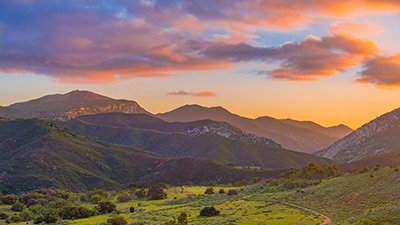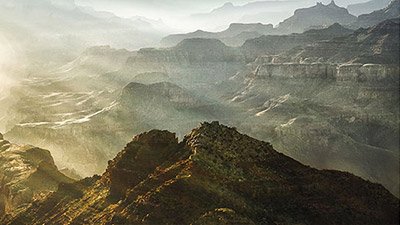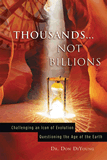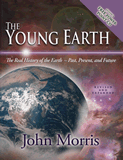
Revisiting Bristlecone Pines and the Bible
A procurement forester offers his thoughts on tree growth rings and the biblical chronology. John Woodmorappe responds.
Re: Biblical Chronology and the 8,000-Year-Long Bristlecone Pine Tree-Ring Chronology
I just read John Woodmorappe’s short article on BCP Chronology vs. Biblical Chronology.
I must admit, I was hoping for the easy more-than-one-growth-per-year situation. In [the state of] Georgia that is quite often the case with Loblolly Pine trees. In a year with a warm spring, hot early summer, then maybe a hurricane blows through and cools things off with a lot of water, the cycle will sometimes start over. So, in one growing season (March to October in Georgia), we can can have two sets of early wood and late wood, giving two rings per year—or what we call a “real ring” and a “false ring.”
Being a procurement forester for a small, family-owned sawmill, I have seen many trees harvested in my 11 years experience on the ground, plus all the field trips I took during classes at [the University of Georgia’s] Warnell School of Forest Resources. I can honestly say that each tree has similarities in the growth pattern, but they do not always match up. Just two days ago I went out to a logging job that was harvesting natural, old growth timber (not to be confused with “virgin timber”; “old growth” just means the stand of trees in this part of the forest is on the downhill side of its life expectancy). The stand consisted of Loblolly (Pinus taeda) and shortleaf (Pinus echinata) pine trees ranging in age from 50 years old to 80 years old. They were all sizes. Some of the younger trees were better than 20 inches at DBH (diameter @ breast height = 4.5 feet), and had four clear logs of wood (log = 16.5 feet of merchantable wood). Some of the trees that were oldest, pushing 80 years old, were only 14 inches DBH and only three clear logs tall.
When you look at the stumps of the trees, you instantly see that the trees in this stand, like so many natural stands, grow at different rates.
For example, let’s say we are going to single out two trees from an acre section of natural, old-growth forest. Tree “A” could be just 30 feet from tree “B,” but be totally different in size and even shape. Perhaps they’re the same age (60 years), but “A” is 1.5 logs shorter and six inches bigger DBH than tree “B.” Looking around the trees, you see that tree “B” had other trees all around it—no farther than 30 feet and no closer than 10 feet—and it is a co-dominant tree. Looking at tree “A,” we see that tree “B” is the closest tree to it; there is no other tree within 50 feet of it on the adjacent “sides.” We take a core sample to age tree “A.” We see that tree “A” has close growth rings at first; then at about 10 years old, the rings start spreading farther apart. We also notice in the latter rings that there are a few false rings. We can see them more easily because the rings are spread out and, therefore, are more fully visible all the way around the stem. Harvesting tree “B,” we see steady growth until age 40 when there is a “growth spurt” that lasted five years and then tapered off to where we can barely make out the difference in the rings the past five years.
Now, if tree “A” lived on and the stump of tree “B” somehow fossilized and some forester came back 20 years later to this area of forest, what is he to conclude when trying to date when tree “B” lived? Is he to conclude that tree “B” is 30 years older than tree “A” based on the fact that crossmatching best matches the growth spurt of tree “A” at age 10 to the growth spurt of tree “B” at age 40? Herein lies the dilemma: without an eyewitness or recorded account from an eyewitness, the forester who has come to research the age of this natural, old-growth forest will have a hard time determining the age of these two specific trees. As we have discussed, when tree “B” was harvested, both were 60 years old, but tree “A” has lived on to an age of 80.
In even-aged planted stands of Loblolly Pine trees, this would not be as bad of a problem. The trees are spaced in such a way to accommodate the most even and fastest growth rates with partial harvesting (thinning) being performed at certain frequencies to this end—not to mention that planted stands are well documented throughout their rotation. Natural stands, however, tend to have a variety of ages and species of trees that make identifying the age of the stand harder when trying to determine the age as described above.
Mr. Woodmorappe, I appreciate your work and look forward to reading a more conclusive theory on this supposed 8,000 year old chronology of BCP.
In Christ,
A.M., U.S.
It is true that some trees that grew near each other at the same time don’t crossmatch. But the converse also holds. Every strong crossmatch that is found results only from trees growing at the same time.
It is also true that some ring series are compressed (called a suppression, as from a major disturbance acting on the tree), and there are other ring series that don’t much differ in width from year to year. The latter are called complacent. No one attempts to use either suppressed or complacent ring series in attempted crossmatching. Otherwise, long-term tendencies in ring widths are removed as low-frequency variance.
Finally, to reiterate, while there are many kinds of trees that grow more than one ring per year, there is no evidence that adult bristlecone pines can ever do this.
John Woodmorappe
Recommended Resources

Answers in Genesis is an apologetics ministry, dedicated to helping Christians defend their faith and proclaim the good news of Jesus Christ.
- Customer Service 800.778.3390
- Available Monday–Friday | 9 AM–5 PM ET
- © 2026 Answers in Genesis






